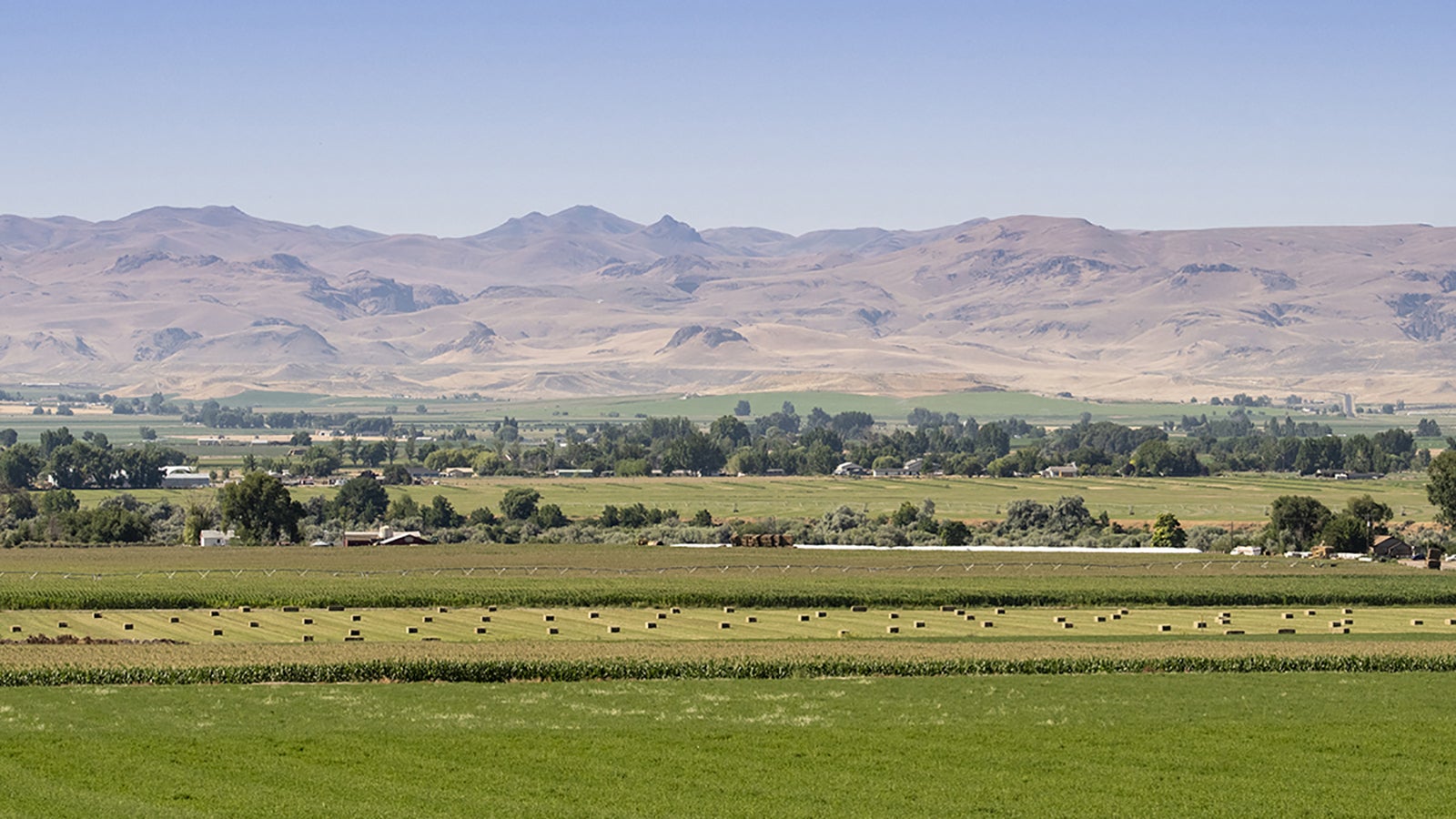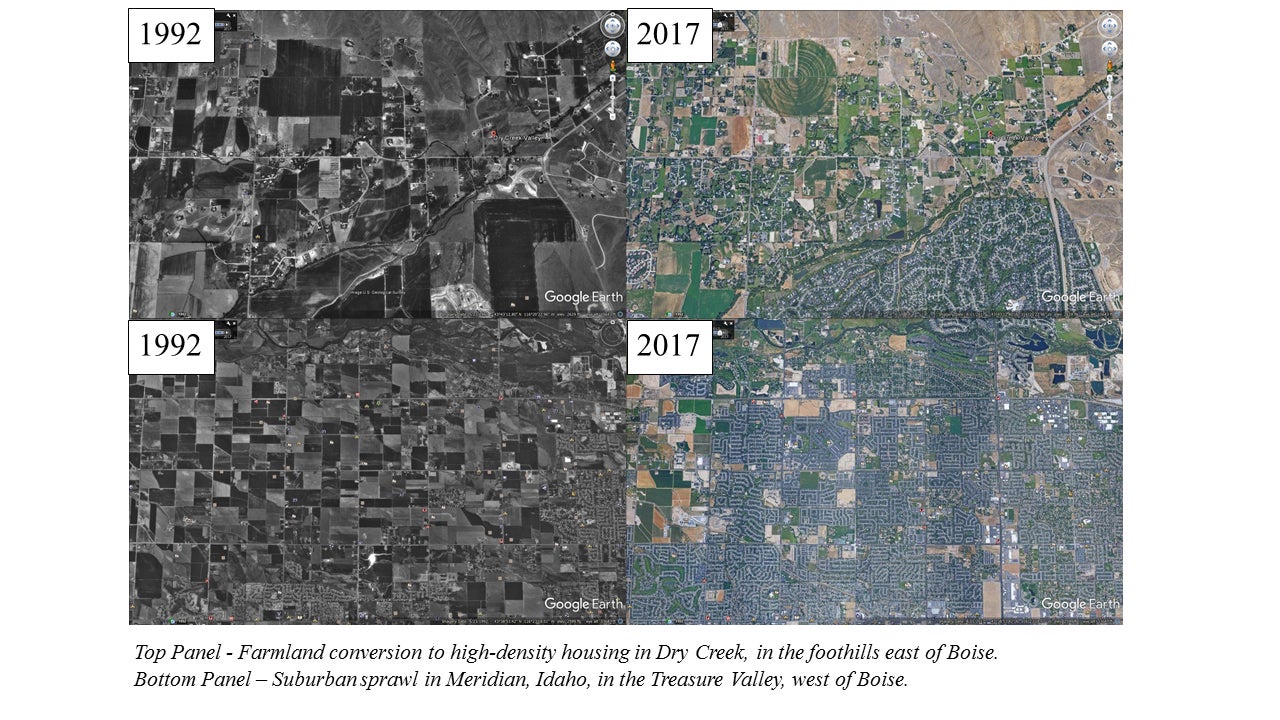
Idaho has one of the fastest population growth rates in the United States and much of that growth is in the Boise metropolitan area, fondly referred to as the “Treasure Valley.” The Treasure Valley also is one of the most unique, diverse and productive agricultural regions in the U.S., but farmland is rapidly disappearing as the urban footprint grows to accommodate new residents.
A new project will build on the urban growth projections completed by a Boise State research team in 2017, which showed that if recent trends in population growth continue, the Treasure Valley will lose as many as 200,000 acres of farmland by 2100. This summer, the United States Department of Agriculture (USDA) awarded $200,000 to Boise State researchers to partner with the community to identify solutions to this problem.
Jodi Brandt, an assistant professor in Human-Environment Systems in the College of Innovation and Design and Sarah Halperin, a doctoral student in the Ecology, Evolution and Behavior program will lead the project. Co-investigators include Shawn Benner, associate dean of the College of Innovation and Design; Neil Carter, formerly on the faculty of Human-Environment Systems; Marie-Anne de Graaff; an associate professor in the Department of Biology; Julie Heath, a professor in the Department of Biology; Vicken Hillis, an assistant professor in the College of Innovation and Design; Jen Schneider, interim associate dean of the School of Public Service; and Rebecca Som-Castellano, an associate professor in the Department of Sociology.
The research team’s diversity in expertise is one of its strengths, said Brandt.
“The preservation of farmland will require scientific and community efforts from a variety of directions, from policy to water quality, to economic production and more,” she said.
The research team will work with community stakeholders on the project, including the Treasure Valley Food Coalition, the American Farmland Trust and the Coalition for Agriculture’s Future.
“This landscape doesn’t belong to scientists,” said Brandt. “We can produce data that can inform management, but it’s the farmers, developers and residents who live in this area who will ultimately use scientific results to decide what the future of the Treasure Valley looks like.”

The transition from agricultural lands to urban and developed lands likely will have major impacts on “ecosystem services,” or the benefits that humans receive from nature. For example, the loss of farmlands is certain to decrease the amount of food produced in the area.
It is still unclear whether the loss of local farms has negative impacts on other things people care about. In other regions, urban growth has had impacts on water quality, species habitat and the amount of carbon sequestered in soils. These impacts also extend to key cultural ecosystem services like recreation, tourism – even the region’s cultural identity.
Questions remain about the benefits from nature that may be lost as the Treasure Valley grows, and management that could prevent the likely negative impacts. The USDA grant will support the researchers as they measure those benefits and identify the trade-offs that may come with different land-use policies. The researchers also will look for ways to help farmers preserve their land for agricultural purposes, and identify the obstacles they may face.
To learn more, contact Jodi Brandt (jodibrandt@boisestate.edu) or Sarah Halperin (sarah.halperin@u.boisestate.edu).
Meet members of the research team and share your thoughts on Oct. 5 at the “Treasure the Valley” farmland preservation event from 4-8 p.m. at the Indian Creek Plaza in Caldwell.
More details about the event: https://www.treasureourvalley.org/
Facebook: https://www.facebook.com/events/2430488080546370/